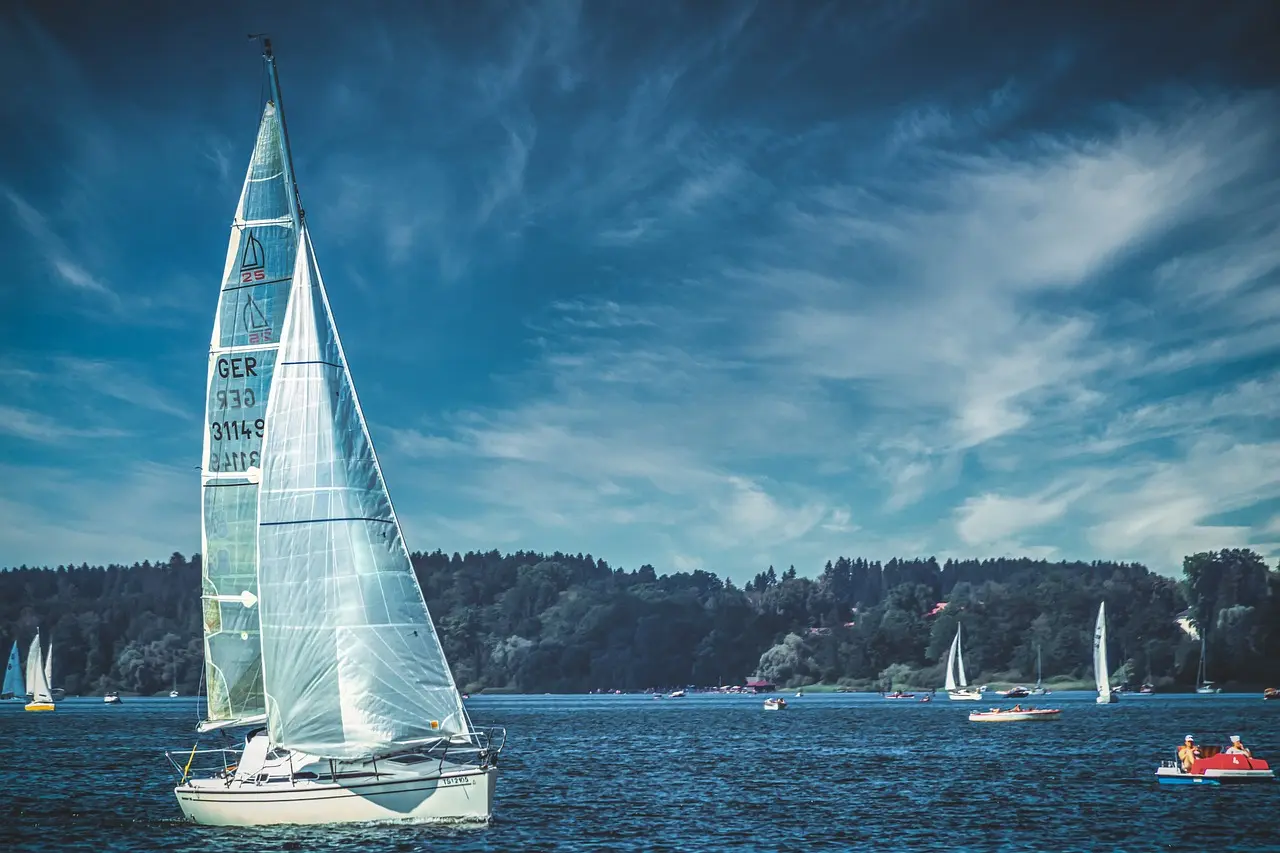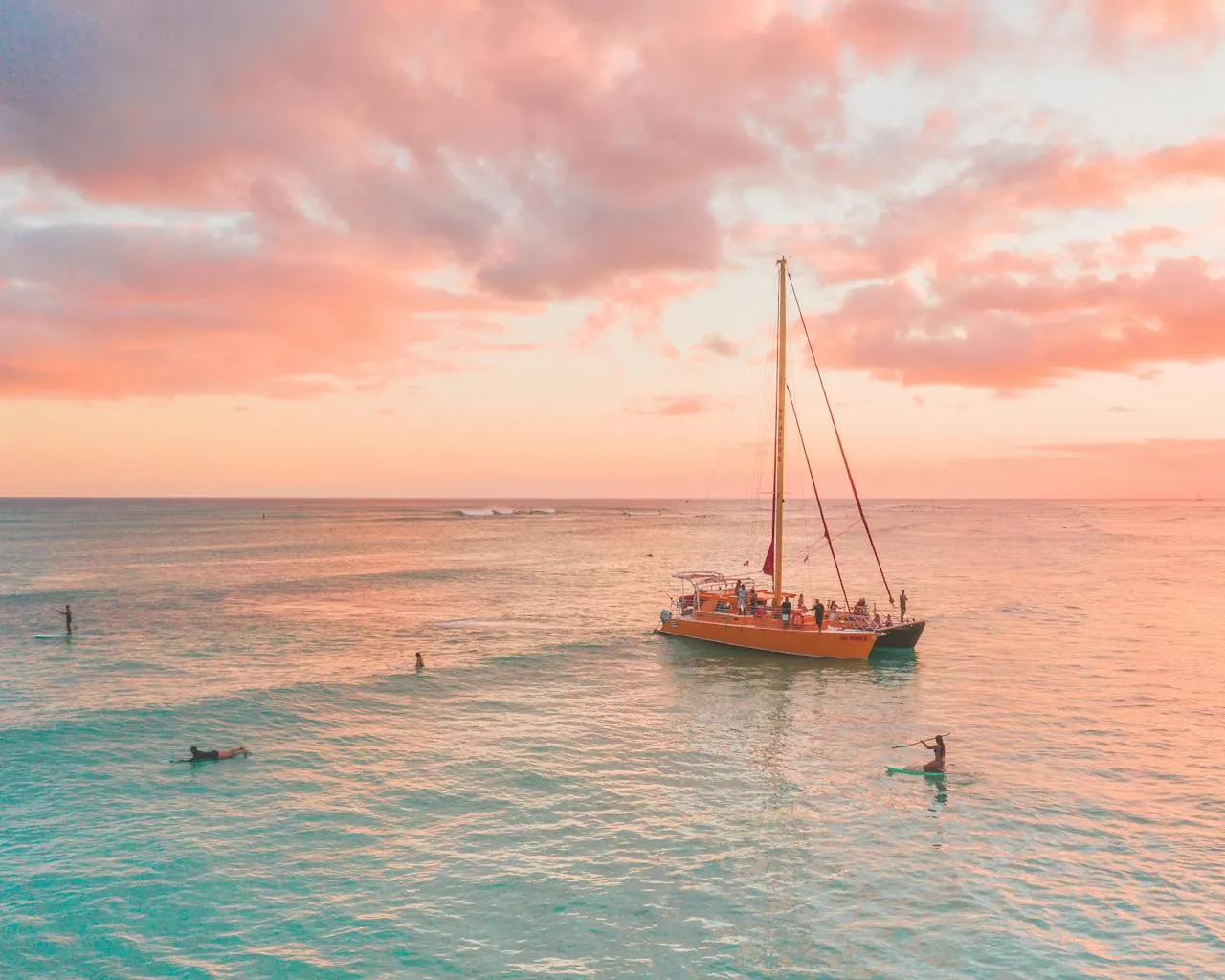Login
I Have Read And Agree To The
Login
I Have Read And Agree To The
Register
I Have Read And Agree To The
Change Password
Welcome to Yachttrading.com!

Congratulations on changing your password successfully!

Congratulations on changing your password successfully!
In sailing, choosing the right sails for your sailboat is very important, and it is directly related to the performance, safety and security of your sailboat while sailing on the water, as well as the sailing experience. In this guide, we will discuss the types of sails and show you how to choose the right sail for your sailing conditions.

When choosing a sail for your sailboat, you'll come across four main sail types: the mainsail, the foresail, the spinnaker, and the storm sail. Each type of sail has its own unique characteristics and is designed for different sailing conditions. Here are the characteristics of these four types of sails:
The mainsail is the largest sail on a sailboat, attached to the mast and boom, and is responsible for generating most of the forward power of the sailboat for a wide range of sailing conditions. Mainsails come in a wide variety of sizes and shapes, with the most common shapes being the standard triangular, square-topped, and so on.
A Genoa sail, also called a foresail, is used in conjunction with the mainsail to increase the speed and agility of a sailboat when sailing upwind. Larger foresails provide more power in light wind conditions, while smaller ones offer better control in strong winds.
This is a large, lightweight sail for downwind sailing, shaped like a balloon and brightly colored. In light wind conditions, it improves sailing speed and overall performance.
Storm sails are small, sturdy sails for rough weather, designed to withstand strong winds and rough seas, providing stability and preventing the boat from capsizing.
When sailing on the water, the choice of sail type is decisive for the sailing experience. Adapting the sails to the specific sailing conditions will not only improve the sailing performance, but also let you enjoy the sailing. Here are some tips on how to choose the right sails for your sailing conditions:
In light wind conditions, you need to choose a lightweight sail, such as a genoa or a spinnaker, which maximizes sail area, makes effective use of the breeze, and maintains boat speed. In strong winds, you need to choose durable sails, such as mainsails and storm sails, which provide stability and ensure safe sailing and maneuverability.
When sailing, the choice of sails is mainly determined by the sailing area. If you are sailing along the coast, where the wind condition is changing and the landscape is complicated, you need to choose the sails with multi-functionality, such as the combination of mainsail and genoa, which can quickly adapt to different wind strength and direction, and flexibly cope with all kinds of conditions. For offshore sailing, due to long distances and complex weather conditions, a strong sail, such as a mainsail or storm sail, is preferable to provide stability and maneuverability when away from the coast.
Racing sails are designed for speed and agility, and performance rather than durability is the first consideration when choosing a racing sail. Racing sails are often spinnakers or genoa sails, which enhance efficiency and speed and give an advantage in racing. Cruising sails, on the other hand, focus on comfort and ease of handling. When cruising, choosing sails that are reliable and don't require frequent adjustments, such as rolled-up headsails and self-adhesive spinnakers, allows for smoother sailing.
There are many privacy considerations when choosing sails for your sailboat that can affect the sailing experience at sea. The following aspects need to be focused on:
The right size of sail should be adapted to the boat's rigging. Unsuitable sails can lead to inefficient sail handling, affecting maneuverability and the sailing experience. When choosing sails, it is recommended to consult with a sailmaker to determine the ideal size that meets the boat's specifications.
The material of a sail determines its durability and performance. Different materials, such as polyester, polyester film, laminates, etc., vary in strength, stretch resistance and weight, affecting the sail's ability to cope with different wind conditions and its longevity, and the choice of the right material can increase its longevity and sailing efficiency.
Optimizing the shape and aerodynamics of a sail can improve the speed and efficiency of a sailboat. The curvature and camber of a sail affects its interaction with the wind, which in turn affects the propulsion and maneuvering of the boat. Understanding these principles will help to adjust the sail for optimal performance in different sailing conditions.
Tags :
 Leave the comment
Leave the commentQuestion Type
Question Type
Question In Detail
Relevant Recommendation

25 July 2025
When sailing at sea, unexpected weather conditions are not uncommon, and storms in particular are a major test of yacht and crew safety. What do you do when there is a sudden severe storm on a yacht? This is an emergency knowledge that every boat owner and mariner must have. Keeping calm and responding appropriately is the only way to effectively reduce risk and ensure personal and property safety. Yachttrading has put together a set of emergency guidelines to help you stay calm in a storm.
 1
1 0
0Type Of Feedback
Feedback
Contact Information
+244
You have successfully submitted your message, please wait for our contact.
This website uses technical cookies,which are necessary for you to browse it and which help us to provide the service.Withyour consent,we use profling cookies to ofer you an increasingly agreeable browsing experience,to faclitate interaction withour social-media features,and to enable you to receive marketing messages tailored to your browsing habits and interests Toaccept all profiling cookies,click ACCEPTto decline,click REFUSE.
